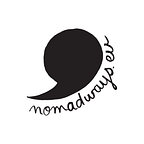If you ask the Internet which are humanity’s greatest problems, a lot of serious things will turn up as a search result — violence, racism, gender inequality, politics, global warming etc. All of those exhausting and awful challenges root in one place: being in a constant struggle with each other simply because there is no understanding. Why there is no understanding?
Of course many of us do not want to accept others, but for some it is quite difficult to figure out people who do not or cannot let you know what is their issue, what is their belief. There are two sides in the communication process that need to be attentive: the one sending the message and the one receiving it. However, most of us think we send our message quite clear but in reality many people do not get it the right way. And we often believe we are good listeners but the truth is that we do not pay enough attention to the message and at the end — we don’t understand it. (btw, there is a quite insightful TEdx talk by Celeste Headlee on how to have a good conversation — she focuses on interviewing, but there are some very nice tips there).
So what do we do when we talk to people and they do not understand us? We find more ways to express ourselves and open up — we use different forms of communication and we combine them so we create a content that is clear for the receiving end. Connecting the dots between these different forms is what we call “creative communication”.
What is creative communication?
Jared Masterson says in his article on Medium “The Value of Simple Words” that “with a few notable exceptions, like poetry, the purpose of words and language is to allow for ideas and information to be communicated between people.” And Steve Jobs said that “Creativity is just connecting things. When you ask creative people how they did something, they feel a little guilty because they didn’t really do it, they just saw something. It seemed obvious to them after a while.” Connecting these two mindful remarks, is what connecting the dots could mean for designing a good communication — being simple and being thoughtful.
Be simple
Every other word you add to your message, every other element, image or whatsoever adds additional information, shade to the main topic. The less you put there, the bigger the chance is for it to be clear. But be careful: simplifying is not an easy task — you need to consider every vital element of the information and not miss it. Why not start with avoiding unnecessary adjectives? Try to make it as clear as possible, and then consider how to make it look nice, pretty or polite.
Be thoughtful
Bring empathy to the table if you wish the receiving party to listen. Never forget who are you talking to, what is their background. Never forget the environment the conversation is taking place in. Think of more ways to express the information — not only words, but also images and sounds. The more 3D you make your statement, the more ways people will have to comprehend it. It’s amazing how different people accept information differently: some are strongly visual and see first; some cannot see, but hear very well. Why not adding something for everyone in the mix?
What are the different ways to communicate?
If we go beyond the division on verbal and non-verbal communication, we can say we have many forms to say something: in writing, in images, in video, using sound, music, mix of some. We can add many exciting techniques like storytelling, graphic facilitation, poetry, songwriting, video making. We can use many channels to reach out more people like offline posters, brochures, or online websites, blogs, social media, video media. The opportunities are there and what would make our communication good and creative is using many of those ways into a beautiful mix that addresses the people we want to address.
The more you do it, the better you understand the need of it. Doors will open and you will understand people better — not only they will open up more, but you will also do so. Don’t you remember every time when there was a misunderstanding with someone and the lovely relief when it was cleared up because you opened up, expressed better and discussed it?
Are you interested in exploring the matter in more details? We would love you to join our project “Creative Communication” — a training course in France and a seminar in Bulgaria.
Article compiled by our Alex. She is a communication designer, illustrator and visual storyteller. She has been working in copywriting, digital communication and entrepreneurship during the past 12 years while being always attracted by arts — street dancing, music and drawing. She is a trainer since 2014 when she started teaching about digital skills, marketing and communication; and all the creative ways to do online marketing and business planning. She now studies History of Art in Sofia and explores the possibilities of using art as an educational tool as well as a mean for inclusion & self-development.
About Nomadways
We craft international workshops for artists, educators and youth workers. Together we create pedagogical artwork, share and invent practical solutions to social problems.
- If you are interested in our work, subscribe to our monthly news. Or follow us on facebook, twitter and instagram.
- Join our community of artivists here.
